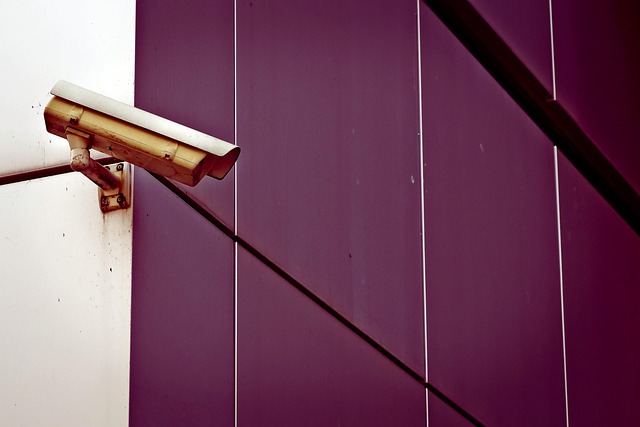License Plate Recognition (LPR), powered by smart security cameras, uses AI to accurately identify and track vehicles through high-res images, even under varying lighting. This technology enhances traffic management, law enforcement, and parking systems, reducing human error and optimizing road safety. Smart security cameras provide 360-degree surveillance, stolen vehicle tracking, and real-time data for efficient city planning and emergency responses. Despite regional variations and challenges, advancements in computer vision have significantly improved LPR accuracy, paving the way for automated toll collection and smarter cities.
“Unleash the power of intelligent vehicle monitoring with License Plate Recognition (LPR) technology. This article explores how LPR, integrated with advanced smart security cameras, transforms traffic management and surveillance. Discover the benefits of automated license plate capture for efficient parking systems, improved road safety, and enhanced security. We’ll delve into the technical intricacies, discuss challenges from data privacy to accuracy, and peek into future prospects as smart security cameras continue revolutionizing transportation.”
Understanding License Plate Recognition Technology
License Plate Recognition (LPR) technology has emerged as a powerful tool in vehicle monitoring and surveillance systems. This advanced technology utilizes machine learning algorithms and computer vision to identify and extract information from license plates, enabling efficient and accurate vehicle tracking. By employing high-resolution smart security cameras, LPR systems can capture clear images of license plates, even under various lighting conditions and angles.
The process involves several steps: image capture, character segmentation, plate recognition, and data extraction. Smart security cameras play a pivotal role in this process by capturing high-quality footage, ensuring that the license plates are well-lit and visible. Once captured, these images are processed through sophisticated algorithms that analyze the characters on the license plate, translating them into digital data for further use. This technology has found extensive applications in traffic management, law enforcement, and parking systems, enhancing overall safety and efficiency.
Integrating Smart Security Cameras for Vehicle Monitoring
Integrating smart security cameras into vehicle monitoring systems offers a sophisticated and efficient solution for enhancing safety and security on roads. These advanced cameras, equipped with artificial intelligence, can capture high-resolution images of license plates, enabling precise identification and tracking of vehicles in real-time. By deploying them at strategic locations such as toll booths, parking lots, or city centers, authorities can monitor traffic flow, detect unauthorized vehicles, and even enforce traffic regulations more effectively.
Smart security cameras provide a 360-degree view, ensuring comprehensive vehicle surveillance. Their ability to analyze license plate data allows for quick response times during emergencies, stolen vehicle tracking, and traffic incident management. This technology significantly reduces human error and improves overall monitoring accuracy, contributing to a safer driving environment.
Benefits and Applications of LPR in Traffic Management
License Plate Recognition (LPR) technology offers significant advantages for traffic management systems. One of its key benefits is the ability to automatically identify and track vehicles, providing valuable data for efficient control and monitoring. This enables traffic authorities to optimize flow patterns, reduce congestion, and improve overall road safety.
LPR systems, integrated with smart security cameras, can monitor vehicle movements in real-time, facilitating better decision-making. They can detect unauthorized entry, help enforce parking regulations, and support incident management by quickly identifying vehicles involved in accidents or criminal activities. This technology plays a crucial role in urban planning, enhancing the effectiveness of transportation networks and contributing to smarter cities.
Challenges and Future Prospects of License Plate Recognition
The challenges in license plate recognition (LPR) technology include variations in plate designs, fonts, and lighting conditions across different regions and countries. Traditional LPR systems often struggle with low-resolution images and complex backgrounds, leading to misreads and false positives. However, advancements in computer vision and deep learning have significantly improved accuracy rates. The integration of smart security cameras equipped with AI capabilities can enhance these systems further, allowing them to adapt to new plate formats and environments.
Looking ahead, the future of LPR holds immense potential for vehicle monitoring and traffic management. With the proliferation of smart cities and connected vehicles, real-time data from LPR systems can contribute to efficient traffic flow, automated toll collection, and improved public safety. As technology evolves, expect more robust algorithms, higher recognition accuracy, and seamless integration with existing infrastructure, making license plate recognition a cornerstone of modern transportation management.
License plate recognition (LPR) technology, powered by advanced image processing and deep learning algorithms, is transforming vehicle monitoring. By integrating smart security cameras into traffic management systems, cities can leverage LPR’s ability to capture and identify vehicle plates for efficient tracking and analysis. This innovative approach offers numerous benefits, from congestion reduction and improved public safety to enhanced parking management. While challenges like privacy concerns and data accuracy persist, ongoing advancements in LPR technology promise a brighter future for smarter, more sustainable transportation systems.
